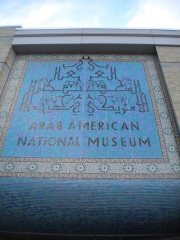Today, March 14, 2012 the internet search engine Google is celebrating the life and work of Japanese origami Master Akira Yoshizawa by spelling out its banner logo in origami letters.

- Google Origami Logo designed by Robert J. Lang
Such a move is a testament to Yoshizawa’s contribution to the worldwide phenomenon that origami has become. It’s timing is also wonderful as we celebrate the opening this week of the exhibition Folding Paper: The Infinite Possibilities of Origami at the Japanese American National Museum.
Had Yoshizawa lived another seven years—he was born on March 14, 1911 and died in 2005—today would have been Yoshizawa’s 101st birthday. Yoshizawa was the world’s first full-time origami artist. In his twenties, he gave up his job in a factory to devote his life to origami. Over the course of his long life, he created numerous new origami designed, including rabbits, gorillas, pandas, and the pelican featured in the Folding Paper exhibition at JANM.

Akira Yoshizawa, photo courtesy of Mrs. Kiyo Yoshizawa
Yoshizawa also invented a new folding technique called wet folding, which enables folders to smooth down points and angles to create more naturalistic figures. This technique revolutionized origami, transforming it into a medium that is now used by artists all over the world to create exquisitely modeled folded paper sculptures.
In addition, he developed a system of notation for origami designs made up of arrows and lines to indicate the types and directions of folds. A version of this system, which helps people who don’t read Japanese to understand origami instructions, has essentially become the written language of origami instruction. In acknowledgement of his contributions to the evolution and spread of origami worldwide, the Japanese Emperor Hirohito awarded him the Order of the Rising Sun in 1983
Now, back to Google’s logo. It might be surprising to some that the playful origami letters were not generated by a computer. They were folded by renowned American origami artist Robert J. Lang. Lang, a laser physicist with a Ph.D. from CalTech, like Yoshizawa, left his job at JPL in Pasadena to become a full-time origami artist, and he now designs a wide range of origami forms, writes and lectures all around the world about origami (watch Robert Lang’s TED talk >>).
Lang’s approach to origami is highly mathematical, as can be seen in his super-complex insects and animals like the Emperor Scorpion on view in the Folding Paper exhibition. He is also regularly asked to apply his profound understanding of the mathematical origami to projects in the realms of space exploration, medicine, car air bag design, television commercials and now search engine logo design.

Scorpion HP, opus 593 by Robert J. Lang, 2011, folded from one uncut square of Hanji paper
Lang was my advisor for the exhibition since its conception in early 2010. I had thought I couldn’t be more impressed by Robert than I already was. He epitomizes the spirit of contemporary origami in his brilliance, artistry and generosity of spirit. Today he told me that when he was hired by Google to design its origami logo, he was asked to sign a non-disclosure agreement. He had to keep the project a secret. Now he’s being hired to do top secret origami assignments! Can he get any more awesome?!
Come and celebrate Akira Yoshizawa, Robert J. Lang and other outstanding origami artists at JANM! If you need to find the museum’s address, just google it!
Robert J. Lang will give a lecture at JANM entitled From Flapping Birds to Space Telescopes: The Modern Science of Origami
on Saturday May 26 at 2pm.
Posted by Meher McArthur, Curator of Folding Paper: The Infinite Possibilities of Origami


























